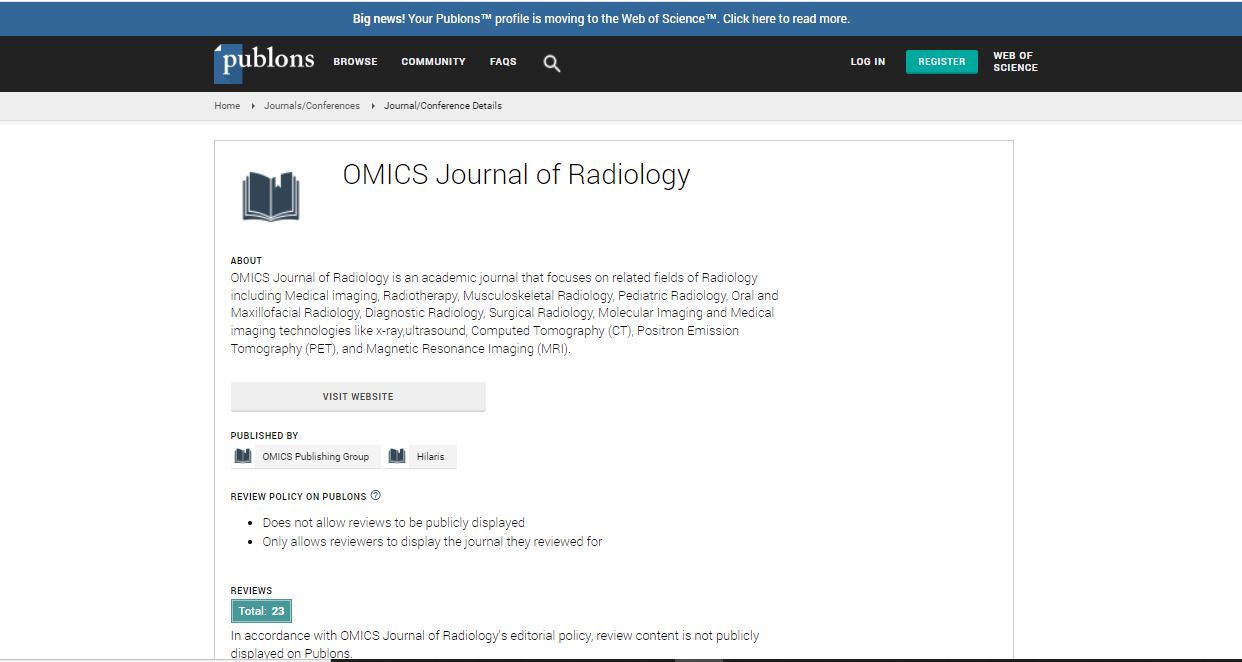Research Article
Staging Hepatocellular Carcinoma with Gadolinium-Ethoxybenzyl Diethylenetriaminepentaacetic Acid -Enhanced Magnetic Resonance Imaging: A Comparison with Multi-Detector Row Computed Tomography
Jingjing Fu1, Jun Zhao2, Xiaochun Zhang2, Xuesong Li3, Li Xiaoming2 and Lin Zhang2*
1College of Nursing, Third Military Medical University, Chongqing, China
2Department of Radiology, Southwest Hospital, Third Military Medical University, Chongqing, China
3Institute of Hepatobiliary Surgery, Southwest Hospital, Third Military Medical University, Chongqing, China
- *Corresponding Author:
- Lin Zhang
Department of Radiology
Southwest Hospital, Third Military Medical University
29 Gaotanyan St., District Shapingba
Chongqing, 400038, China
Tel: +86-23-6875-4425
Fax: +86-23-6546-3026
E-mail: linzhangswh@yahoo.com
Received Date: March 29, 2016; Accepted Date: May 17, 2016; Published Date: May 20, 2016
Citation: Fu J, Zhao J, Zhang X, Li X, Xiaoming L, et al. (2016) Staging Hepatocellular Carcinoma with Gadolinium-Ethoxybenzyl Diethylenetriaminepentaacetic Acid -Enhanced Magnetic Resonance Imaging: A Comparison with Multi-Detector Row Computed Tomography. OMICS J Radiol 5:222. doi:10.4172/2167-7964.1000222
Copyright: © 2016 Fu J, et al. This is an open-access article distributed under the terms of the Creative Commons Attribution License, which permits unrestricted use,distribution, and reproduction in any medium, provided the original author and source are credited.
Abstract
Aim: To explore if gadolinium-ethoxybenzyl-diethylenetriaminepentaacetic acid (Gd-EOB-DTPA)-enhanced MRI provides more accurate information than multi-detector row computed tomography (MDCT) for staging hepatocellular carcinoma (HCC).
Methods: We retrospectively investigated 112 patients with HCC who underwent MDCT and Gd-EOB-DTPA enhanced MRI within one month before treatment. Two experienced radiologists reviewed the size, number, and boundaries of the HCC lesions, portal invasion, and tumor metastasis on MDCT and MRI images in consensus. Then the performance of Gd-EOB-DTPA-enhanced MRI and MDCT on staging HCC lesions was compared through statistical analysis. The classification of the Barcelona Clinic Liver Cancer (BCLC) stage was also evaluated.
Results: HCC lesions in five patients were detected on Gd-EOB-DTPA-enhanced MRI only. Of the other 107 patients, 21 (19.6%) were in BCLC stage 0, 49 (45.8%) in BCLC stage A, 14 (13.1%) in BCLC stage B, and 23 (21.5%) in BCLC stage C on MDCT. On Gd-EOB-DTPA-enhanced MRI, 12 (11.2%), 48 (44.9%), 17 (15.9%), and 30 (28.0%) patients were classified as BCLC stages 0, A, B, and C, respectively. The two methods differed significantly in staging HCC patients (χ2=16.444, P=0.006).
Conclusion: This study suggests that Gd-EOB-DTPA-enhanced MRI provides more accurate information than MDCT for characterizing and staging HCC which will help to choose accurate treatment strategy.

 Spanish
Spanish  Chinese
Chinese  Russian
Russian  German
German  French
French  Japanese
Japanese  Portuguese
Portuguese  Hindi
Hindi 
